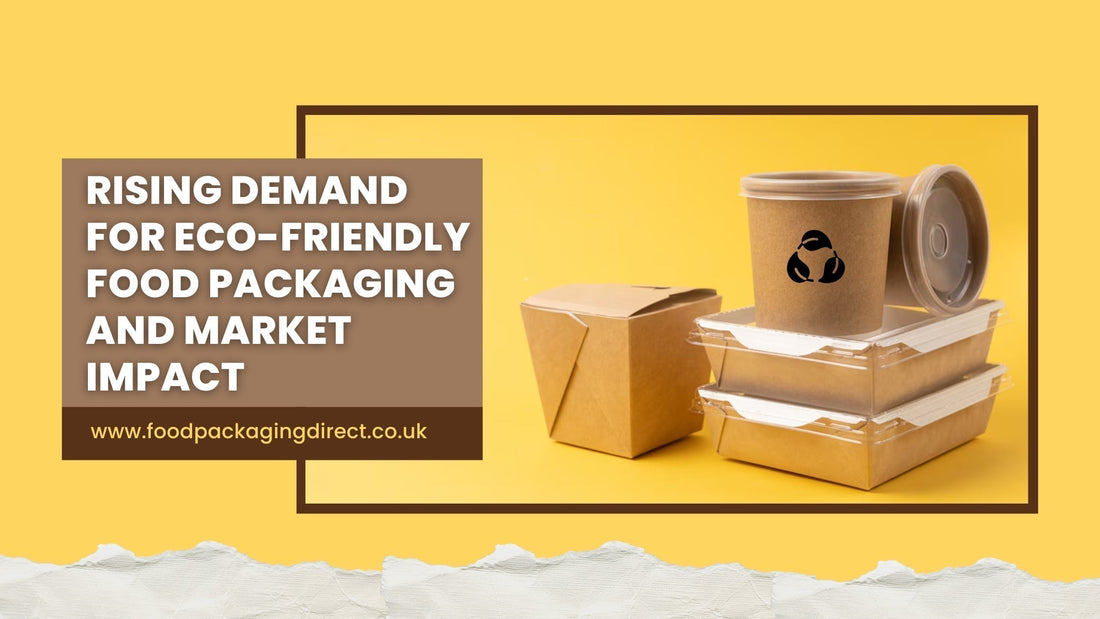Food packaging is a crucial part of the food supply chain, particularly in the food and beverage industry. It improves the customer experience, maximizes distribution and delivery, and maintains product integrity and quality, among other crucial functions. More consumers can conveniently enjoy your food and drinks if you have well-designed packaging.
However, creative food packaging may significantly improve the appeal of food and drinks. Innovative designs and superior food packaging can raise a product's perceived value and support premium pricing. Let us understand how.
Recognizing the Environmental Impact of Conventional Packaging
Traditional food packaging has a big impact on the environment since it produces a lot of trash and pollutants. Only around 9% of the 400 million tons of plastic waste generated yearly is recycled. Single-use plastics are a big issue because they frequently wind up in landfills and account for half of all marine waste worldwide, which damages the environment and contributes to climate change.
Due to changing trends in food preparation and consumption, the food packaging industry is now the fastest-growing segment in the synthetic plastic market. Often thrown out simultaneously, leftover food and its packaging have a significant environmental impact since plastics from fossil fuels take a long time to break down.
However, the growing need for environmentally acceptable food packaging substitutes, like those made of renewable and biodegradable food packaging, offers a workable way around these problems. Businesses can meet consumer demand for socially conscious actions and safeguard the environment by switching to sustainable packaging.
The Sustainable Packaging Market Overview
Environmentally friendly packaging is being pushed on an increasing number of businesses each year. Since more than a million plastic bags fill trash cans every minute and plastic waste contaminates 88% of the sea's surface, a substantial change is needed.
Because of the rise of conscious consumerism, consumers now take the environment into account while making purchases. This is where eco-friendly packaging comes into play, which is essential for increasing sales and growth while also aiming for a positive long-term impact.
According to Fortune Business Insights, the global sustainable packaging market size is expected to grow at a CAGR of 6.7%, estimated to be valued at $518.33 by 2030. The growth of the sustainable packaging market in the UK is influenced by the rise in different macroeconomic factors, like:
- Population
- Disposable income
- eCommerce activities
- Awareness of the side effects of climate change
- Strict government regulation and consumer awareness
Eco-friendly packaging, such as bagasse boxes, is made from materials that are easy to recycle and do not impact energy use or natural resources. It is also commonly referred to as sustainable packaging or green packaging.
Technological Development and the Launch of Sustainable Materials: The Greatest Market Potential
The market's leading companies are making investments in cutting-edge technologies to develop packaging options that are both recyclable and compostable, meeting consumer demands and environmental goals. Businesses are focusing on material science breakthroughs, which are leading to the development of novel packaging materials with improved sustainability and performance, such as biodegradable plastics and plant-based composites.
As a result, the market for eco-friendly food packaging is expected to develop soon due to the growing adoption of sustainable materials and technological advancements. In April 2024, the leading snack brand, The British Crisp Co., launched the first completely recyclable paper crisp packet. It claims to be a scalable alternative to 8 billion packets thrown away each year in the UK.
With the emergence of edible packaging options, which allow the container to be eaten with the food item, the market offers a new possibility. These novel materials are frequently made from natural elements like seaweed, starch, or gelatin, completely removing waste and offering extra nutritional advantages. Premium food manufacturers and speciality industries, such as gourmet snacks and beverages, are becoming more interested in edible packaging as a way to set their products apart with creative packaging ideas.
Top Eco-Friendly Food Packaging Types
Innovative approaches to food packaging, like bagasse or Kraft paper biodegradable takeaway containers and edible packaging, are becoming more popular because they provide novel ways to reduce waste. Businesses can choose the best packaging for their food and beverages and help create a more sustainable future by investigating these several eco-friendly disposable food packaging options. Here are our top picks for an instant switch to sustainability:
Paper Packaging
Food packaging made of kraft paper has become a popular option for companies trying to embrace more environmentally friendly methods. Since cardboard food boxes and kraft paper are made from renewable materials, they may be recycled and biodegraded. It serves as an environmentally friendly alternative to traditional plastic packing.
Biodegradable Packaging
Biodegradable materials are becoming more popular as an environmentally friendly substitute for traditional packaging, like bagasse packaging options. Because these materials decompose more quickly, less garbage goes into landfills. Options for biodegradable packaging include plant-based polymers made from materials like sugarcane, also called as BePulp packaging.
Materials for Recyclable Packaging
Food and beverage firms' sustainability initiatives depend on recyclable packaging materials. By using materials that can be gathered, processed, and turned into new paper bags with handles, businesses can drastically lessen their influence on the environment. Paper, glass, metal, and multiple plastics are common recyclable materials.
Summing Up
Food and beverage packaging is more than simply a barrier or container; it is a strategic tool that significantly influences the success of the sector. From maintaining food quality and freshness to strengthening brand identification, it is essential at every point in the food supply chain.
The food and beverage (F&B) and hospitality sectors have room to grow in the future, especially by implementing eco-friendly and sustainable techniques that improve the quality of their products and the experiences of their patrons.
Businesses can lower their carbon footprint and environmental impact by choosing environmentally friendly food packaging options and enhancing their brand image.
Explore a range of sustainable packaging options at Food Packaging Direct, your ultimate partner for bulk and eco-friendly food packaging supplies!

